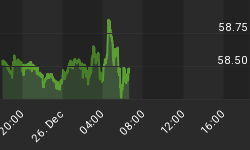"We have never in history observed the median stock as overvalued as we observe presently."
Considering the source and his impeccable quantitative analysis, that John Hussman statement taken from the following paragraph immediately got my full and undivided attention.
"While the valuation of the S&P 500 Index itself was higher in 2000, it's notable that the overvaluation of the S&P 500 was skewed in 2000 by extreme overvaluation in very large-capitalization stocks, while smaller capitalization stocks were much more reasonably valued. In contrast, we have never in history observed the median stock as overvalued as we observe presently. Indeed, the median price/revenue ratio of stocks in the S&P 500 now exceeds the 2000 peak. Likewise, as Damien Cleusix has observed, if we examine valuations by quartiles (25% of stocks in each bin), the average price/revenue ratio of the two middle quartiles also exceeds the 2000 extreme." ~ Leash the Dogma
When asking myself what that might look like in terms of price action, an April 2012 MarketWatch article by Alexander Elder and Kerry Lovvorn in which they elaborated on a very interesting technique used to recognize parabolic rallies came to mind. My next task was to then apply their technique to a grouping of "median" stocks. That's something not as easily done as said, but I decided that the Value Line Index, with its approximately 1,675 companies from the NYSE, American Stock Exchange, Nasdaq and over-the-counter market seemed to be a more than adequate proxy for an aggregate of median stocks (Source: Investopedia) .
The three parameters Elder and Lovvorn proposed for identifying parabolic rallies are as follows:
- Two closes outside of a three-standard deviation channel of a 24-month Average True Range (ATR).
- Five-month moving average is within 20% of the three standard deviation of the 24 month ATR (monthly 3-ATR channel).
- Minimum drawdown from high to close is less than 15% in the past six months.
The simple, summary conclusion is that Alexander Elder and Kerry Lovvorn's metrics demonstrate that the move to historic overvaluations in the bulk of 'stocks in the middle' as seen in the VLE has happened in parabolic fashion.
We also see the same thing on the NASDAQ!
As one would naturally expect, we can find the same in various market sectorsthemselves, with Consumer Discretionary being one of my favorites.
And the "biggies" are not far behind, and currently running a very close second.
Of course, I'm absolutely certain that none of this would surprise Hussman in the least. In fact, his work based on Didier Sornette's "log-periodic bubble" pattern clearly demonstrates that he is way ahead of me, and I highly recommend his most recent Weekly Market Comment, "A Textbook Pre-Crash Bubble", in which he assigns the current Sornette Pattern a finite-time singularity for January of next year. (As I alluded to in beginning, this is but one of, and perhaps even one of the lesser, reasons to read his writings - in this day and age of quantitative BS, it's not only refreshing, reinvigorating, and informative, it's ultimately enlightening and rewarding to come into contact with this kind of productive, rational thinking.)
And, as for Didier Sornette? Well, here's a nice clip that should serve as a very decent introduction to the man that I suspect we will all be hearing much more about sometime in the not very distant future.
I suppose it wouldn't be fair to sign off without giving equal airtime to the many others out there who insist on the complete contrary opinion that there is no bubble in sight anywhere out there, but did you notice the Bollinger Bands on the VLE chart? That's a 3 sigma deviation from the 200 month moving average to add to the 3 sigma 24 month Keltner channel analysis! No bubble? Nothing's overbought? Nobody's overbullish? Nothing's overvalued? Simple statistics tell us that there's almost a 99.7% probability that those statements are flat out wrong. So, perhaps, instead of equal time, we should simply dismiss them after giving them just slightly more than .03% of our time, and the next time someone tells us there's no bubble and no parabola out there, and that stock prices look "relatively low", we need to tell them to either take off their Mr. Magoo 3D glasses, or to go back into the private projection room they crawled out of (and that's being polite about it).



















